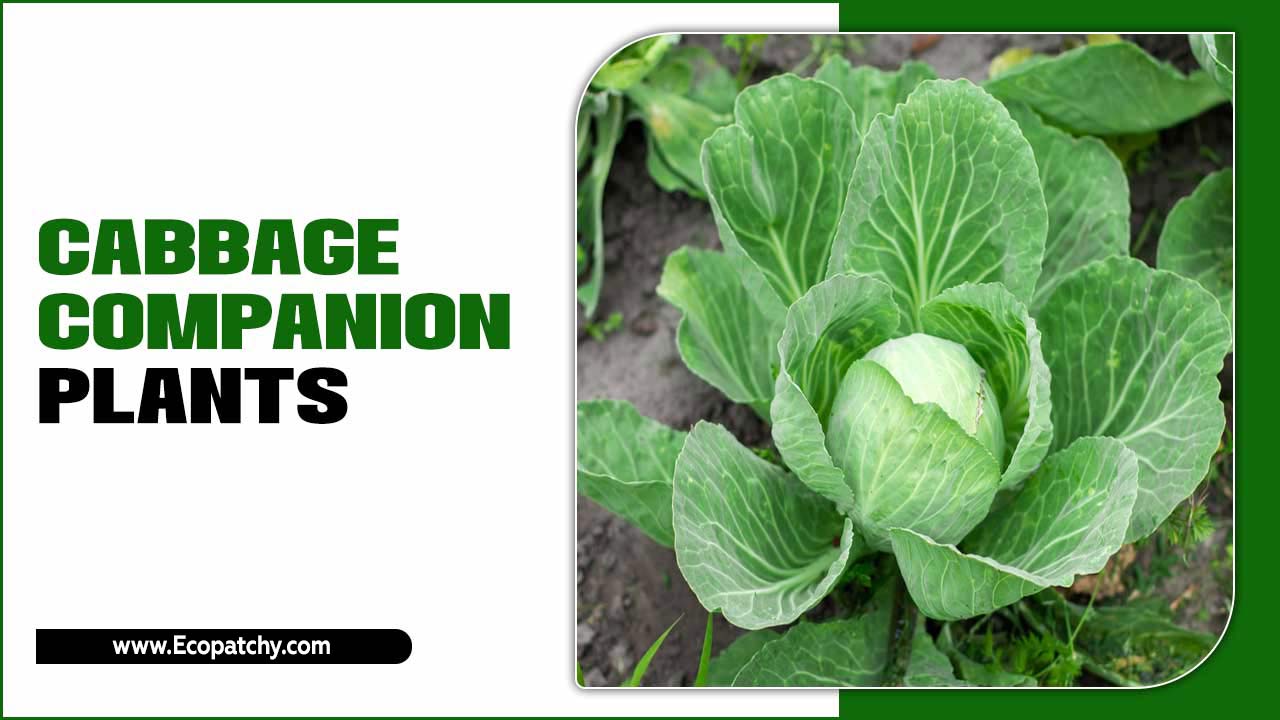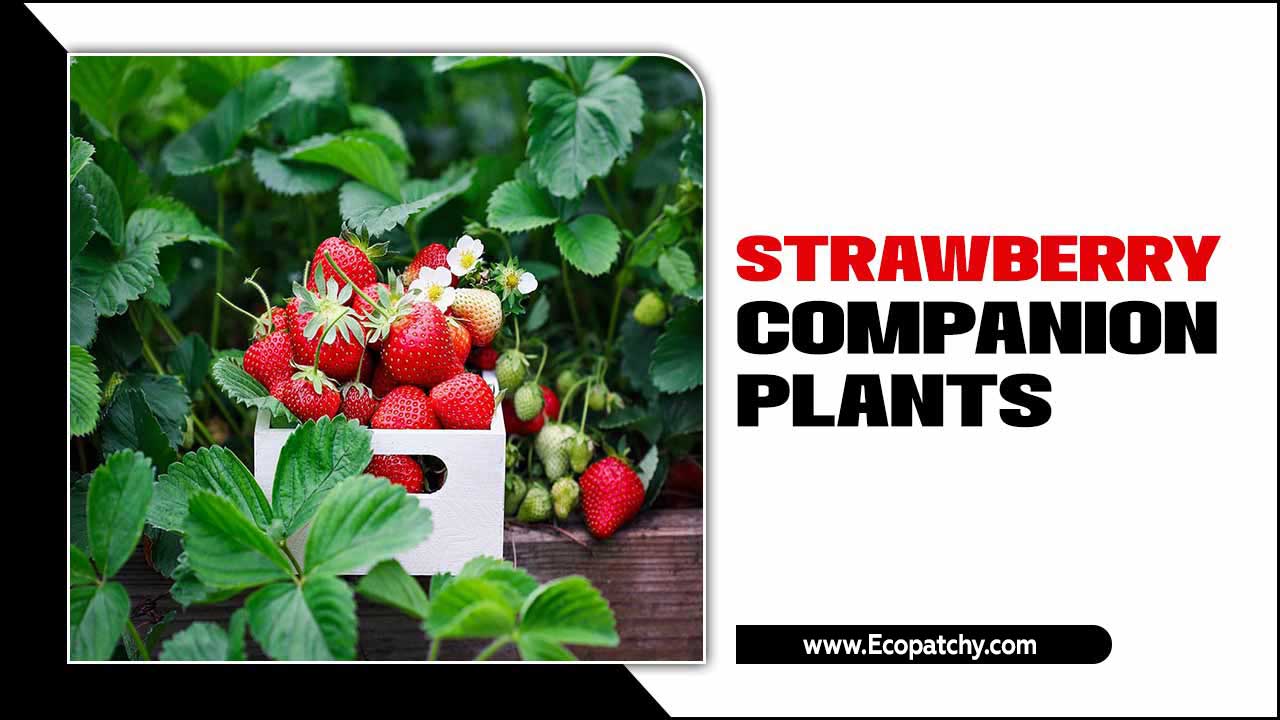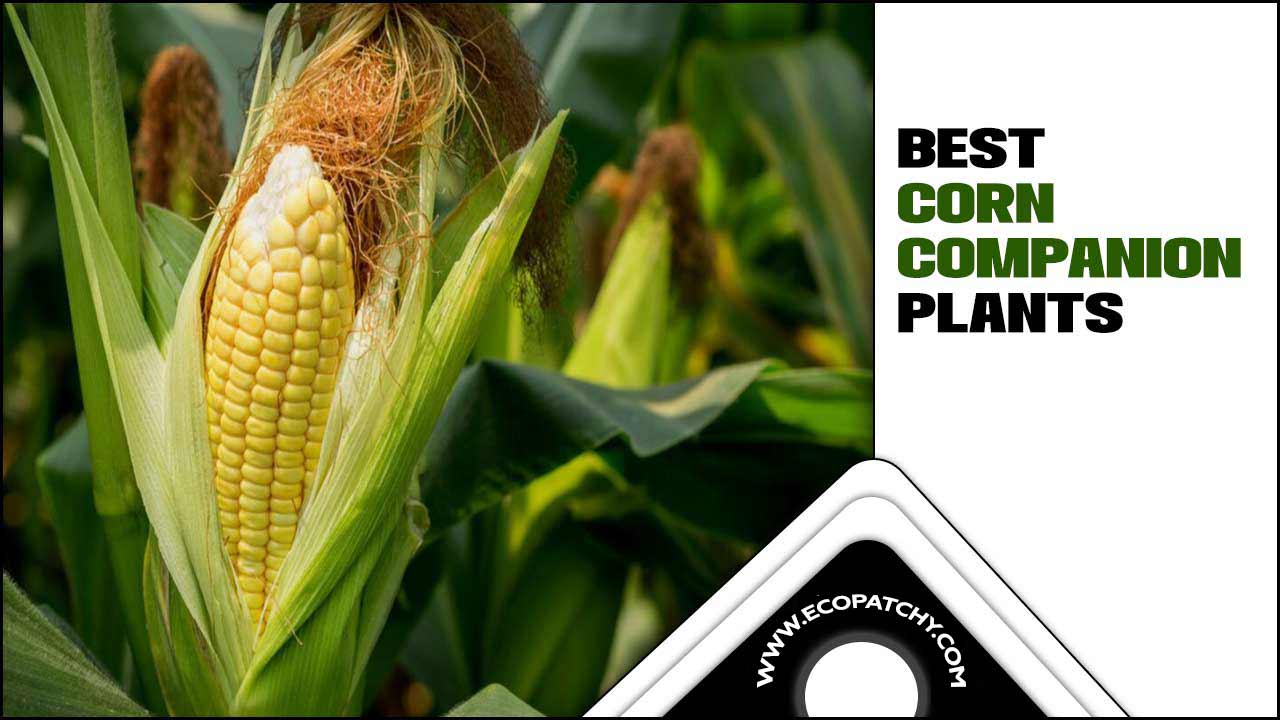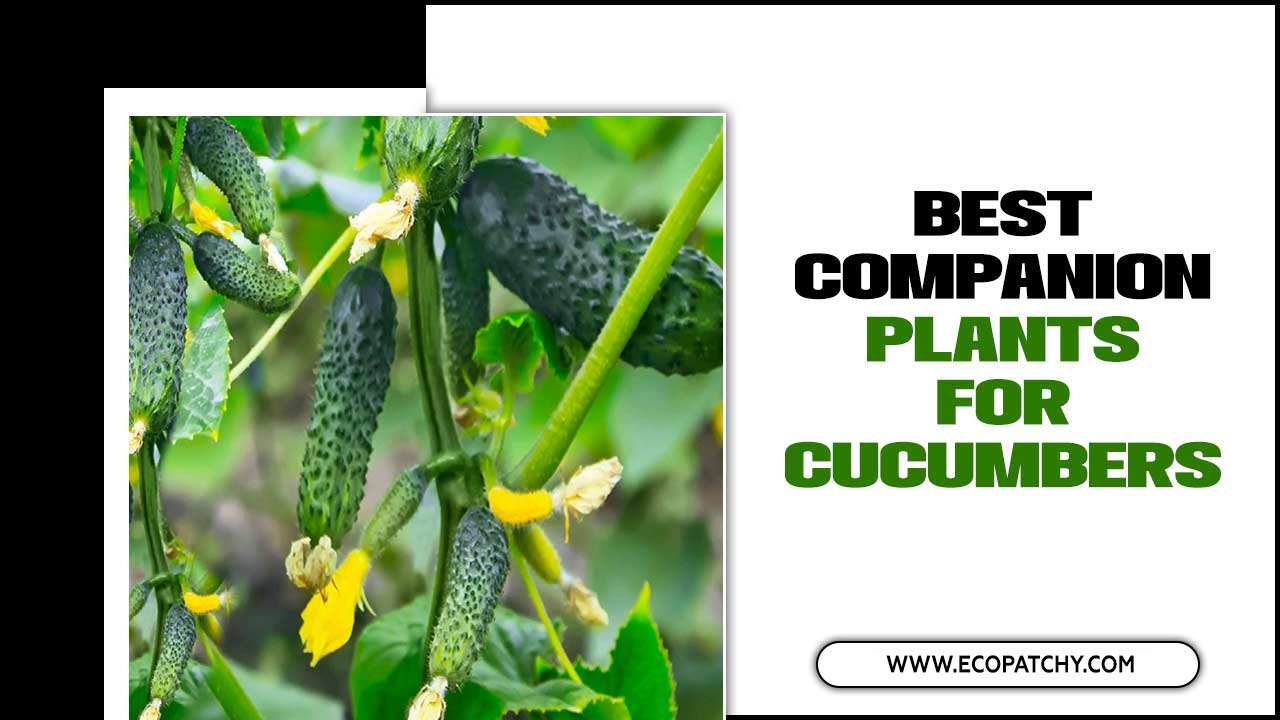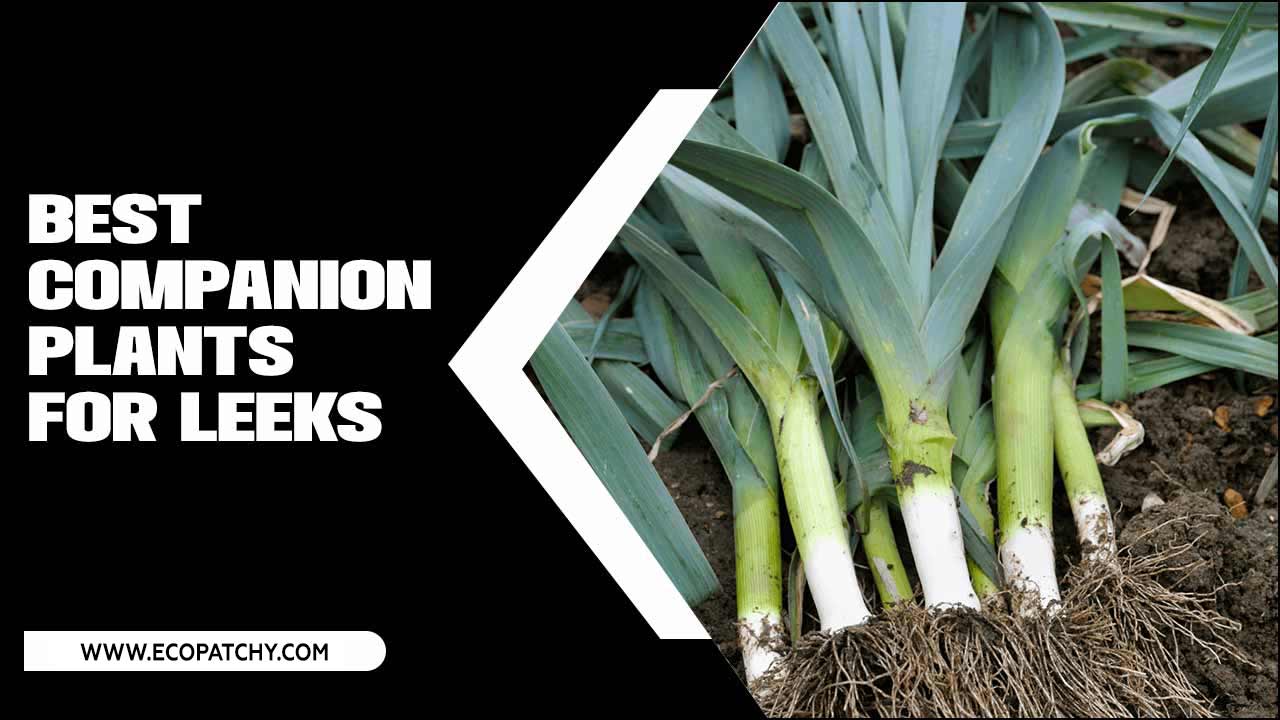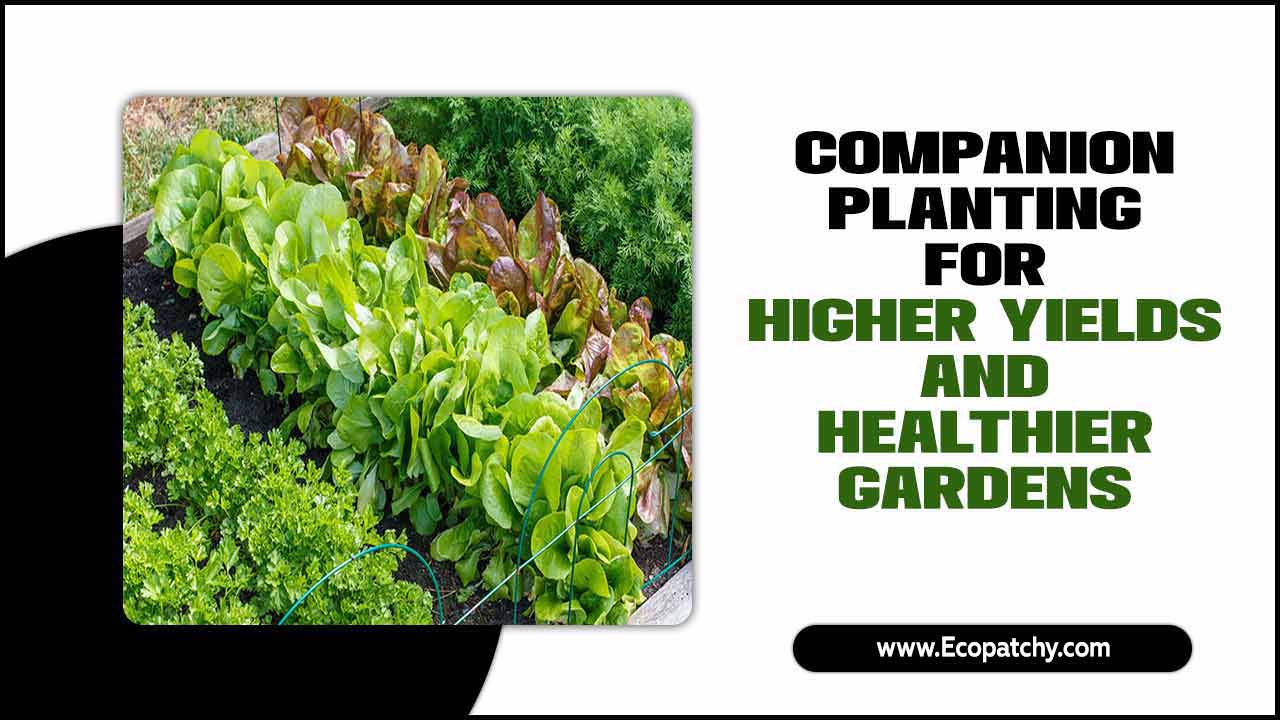Kale has become a staple in many home gardens and for good reason. This versatile leafy green is not only packed with nutrients, but it’s also relatively easy to grow.
However, to truly maximize the potential of your kale plants, it’s important to consider the concept of companion planting. You can create a symbiotic relationship that benefits both crops by strategically pairing kale with certain plants.
Here we will discuss companion planting, how it works, and the benefits of companion planting with kale. We will also cover the top 10 best kale companion plants for A robust harvest. Additionally, we will share common mistakes to avoid when companion planting with kale and tips for maintaining a healthy and thriving garden.
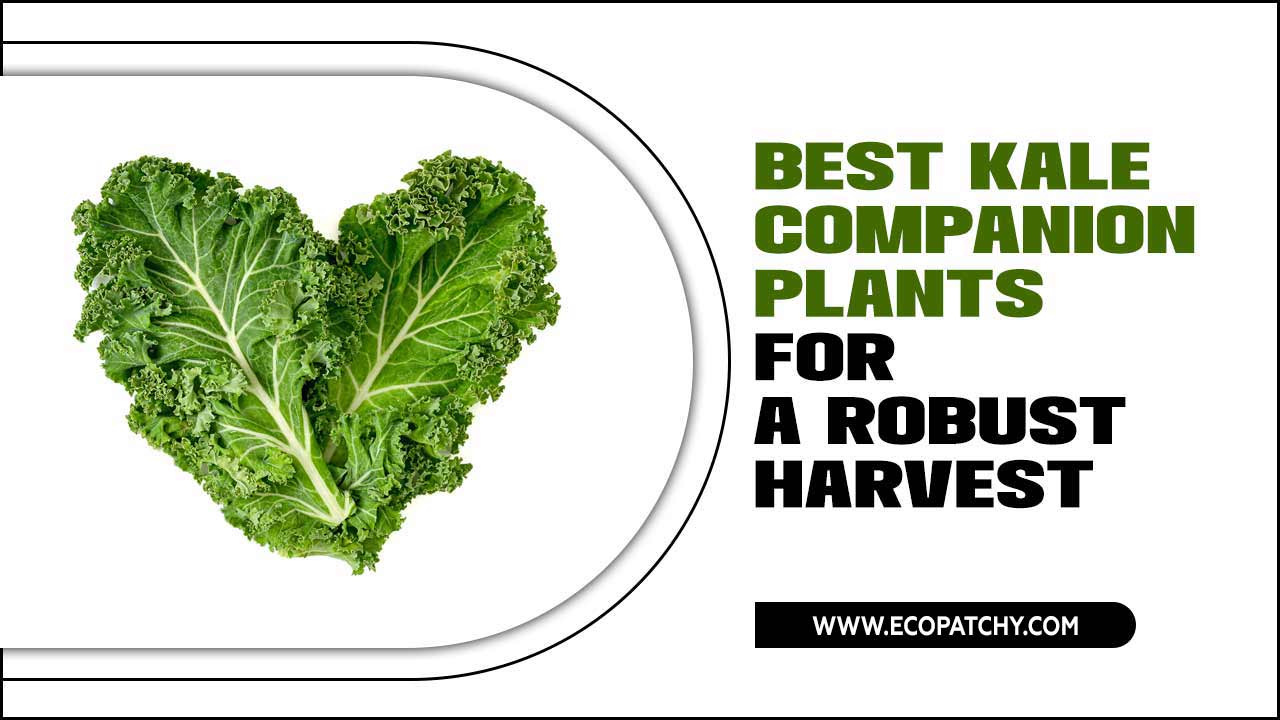
Importance Of Companion Planting
Companion planting promotes biodiversity and creates a resilient and sustainable garden ecosystem. By carefully selecting the best companion plants for kale, gardeners can improve soil fertility, structure, and nutrient availability, resulting in healthier and more productive kale plants.
Additionally, companion plants attract beneficial insects that help control pests naturally, reducing the need for synthetic pesticides. This environmentally friendly approach maximizes growing space and increases overall garden productivity while minimizing reliance on chemical fertilizers and pesticides.
10 Best Kale Companion Plants For A Robust Harvest

Companion planting is a technique that enhances plant growth and reduces pests in the garden. It involves growing certain plants together to stimulate or inhibit each other’s growth. This promotes biodiversity and attracts beneficial insects, which can help deter pests and reduce the need for chemical pesticides.
When growing kale, choosing the right companion plants can make a big difference in the health and productivity of your garden. Kale is a versatile and hardy vegetable that can benefit from certain companion plants that provide shade, attract beneficial insects, or help deter pests. Here are 10 of the best kale companion plants for a robust harvest:
1.Marigolds: Boosting Color And Pest Protection

Marigolds, with their bright blooms, add beauty to the garden and serve as excellent kale companions. These vibrant flowers can repel pests like aphids and nematodes, which can harm kale.
Additionally, marigolds attract beneficial insects like ladybugs that prey on these pests, providing a natural form of pest control. By planting marigolds near kale, gardeners can reduce the need for chemical pesticides. The strong scent of marigolds also helps mask the aroma of kale, deterring pests from approaching.
2.Beans: Adding Nitrogen To The Soil
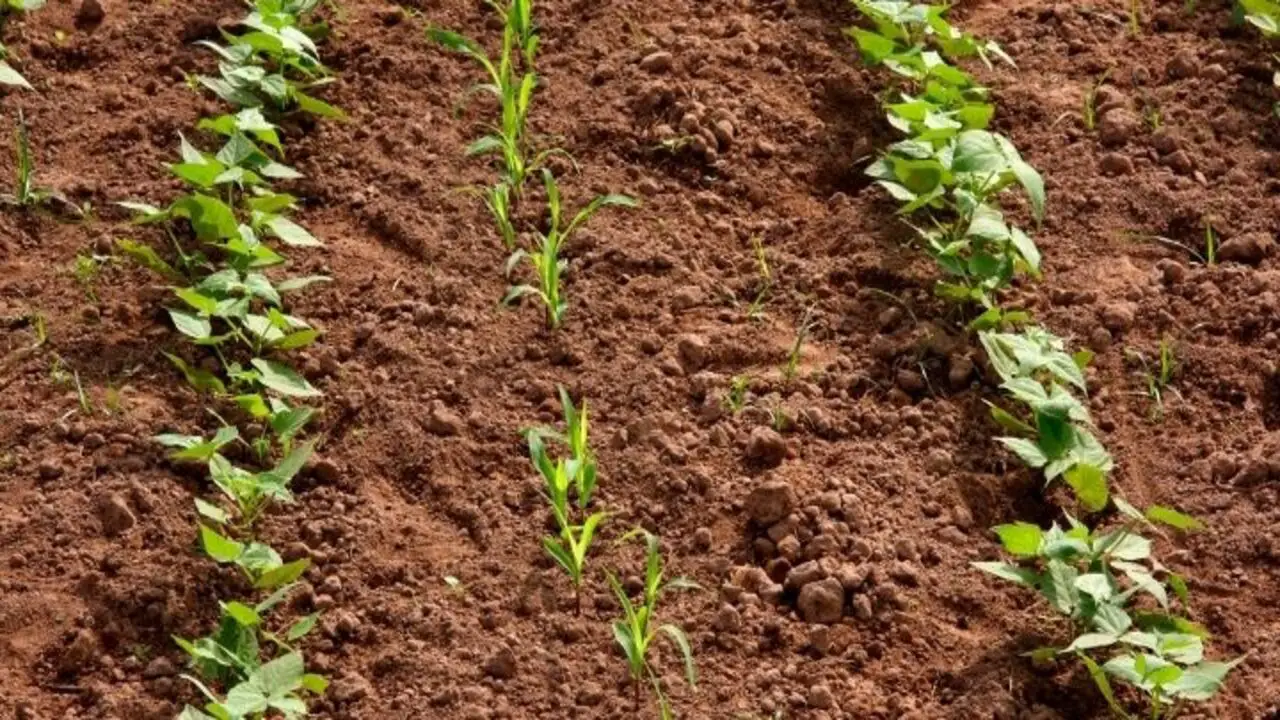
Growing beans alongside kale in your vegetable garden is a great companion planting strategy. Beans are legumes that enrich the soil with nitrogen, which is essential for kale growth. Nitrogen-fixing bacteria in bean roots convert atmospheric nitrogen into a usable form, providing the soil with valuable nutrients.
In addition to improving soil fertility, the presence of beans can reduce the need for nitrogen-based fertilizers. Furthermore, beans can provide shade to kale, preventing excessive heat stress and promoting healthy growth. By incorporating beans into your kale companion planting, you can enhance soil nutrients and ensure a robust harvest.
3.Aromatic Herbs: Enhancing Flavor And Aroma
Aromatic herbs like dill and chives contribute to the flavor and aroma of dishes containing kale. Their strong scents can effectively mask the smell of kale, potentially deterring pests. Planting aromatic herbs near kale can confuse pests, preventing infestations.
Additionally, these herbs attract beneficial insects that feed on pests, improving kale plants’ overall health and vitality. In this way, incorporating aromatic herbs as companion plants enhances kale crops’ flavor, aroma, and resilience.
4.Sweet Alyssum: Attracting Beneficial Insects
Sweet Alyssum, a low-growing ground cover, attracts beneficial insects such as parasitic wasps and hoverflies. These predators help control common pests that can damage kale plants. Planting sweet alyssum near kale creates a habitat that encourages beneficial predators to thrive.
Additionally, the vibrant flowers of sweet alyssum attract pollinators, enhancing the reproduction of kale. Not only does sweet alyssum serve a practical purpose in the garden, but it also adds visual appeal and a pleasant fragrance.
5.Buckwheat Cover Crop: Suppressing Weeds
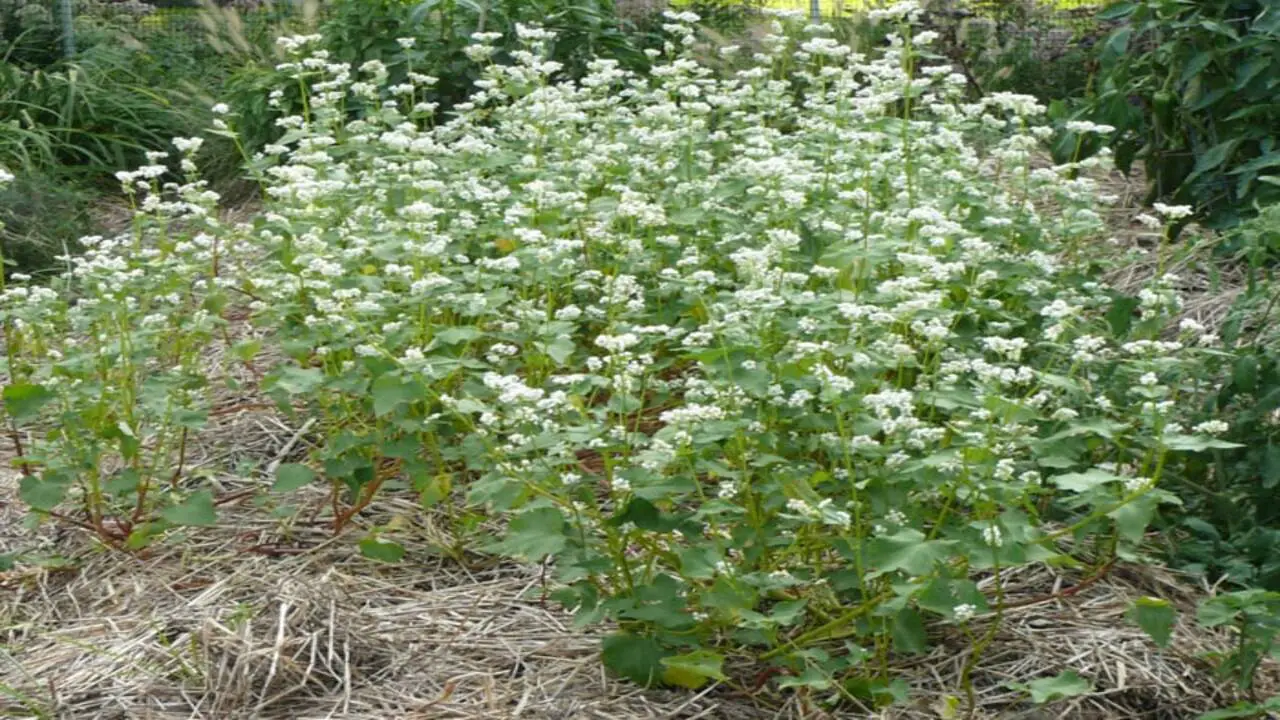
Suppressing Weeds: Buckwheat cover crop competes with weeds, preventing their growth around kale. Its dense foliage shades the soil, preventing weed germination and growth. Additionally, buckwheat cover crop improves soil structure and moisture retention.
It acts as a green manure, adding organic matter and nutrients to the soil. Incorporating buckwheat into the garden rotation system helps control weeds naturally, creating an environment conducive to a robust kale harvest.
6.Nasturtium: Warding Off Insect Pests
With their strong scent, Nasturtiums are known for repelling many insect pests, making them an excellent choice as kale companions. Planting nasturtiums near kale can create a diversion for pests, reducing damage and infestations.
Additionally, these vibrant flowers attract beneficial insects that prey on kale pests, creating a natural balance in your vegetable garden. Not only do nasturtiums serve as effective pest deterrents, but they also add beauty and color to your garden space. Harness the power of companion planting and reap the benefits for your kale crops.
7.Onions: Adding Nutrients And Flavor
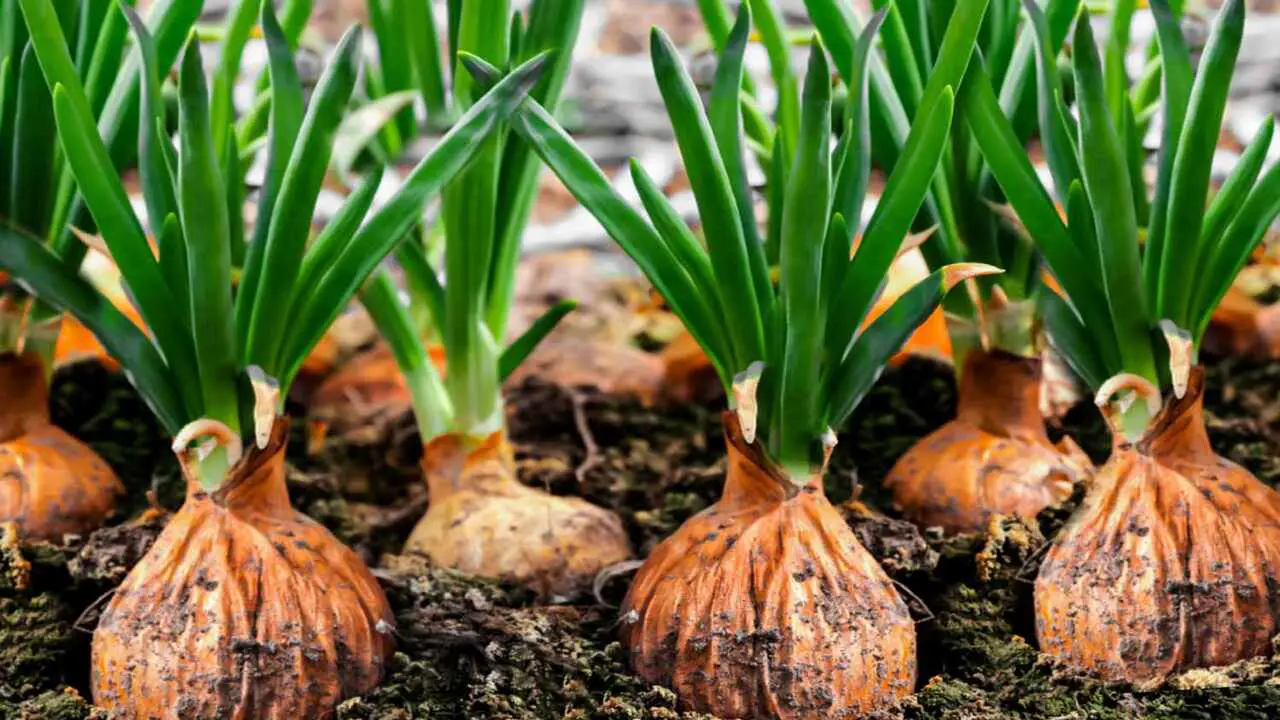
Onions bring more than just flavor to the table. They also contribute essential nutrients like sulfur and potassium to the soil, benefiting kale plants. When planted alongside kale, onions can enhance the flavor of both vegetables when cooked together.
Additionally, the strong scent of onions serves as a natural pest deterrent, masking the smell of kale and deterring pests like cabbage loopers. Onions also offer a defense against fungal diseases that can affect kale.
8.Radishes: Improving Soil Quality
Radishes are an excellent addition to your vegetable garden, especially regarding companion planting with kale. These root vegetables have deep taproots that help break up compacted soil, improving water and nutrient absorption.
By loosening the soil, radishes create a more favorable environment for the shallow root system of kale, enabling better access to essential nutrients. Additionally, radishes release compounds that can repel pests, reducing the risk of infestations in your kale plants. They also serve as effective weed suppressors, giving your kale plants more space and resources.
With their fast growth rate, radishes can be harvested before they overshadow the kale, preventing competition for sunlight. Enhancing the soil quality and repelling pests, radishes are a great companion for kale in your garden.
9.Cucumbers: Adding Nutrients And Shade
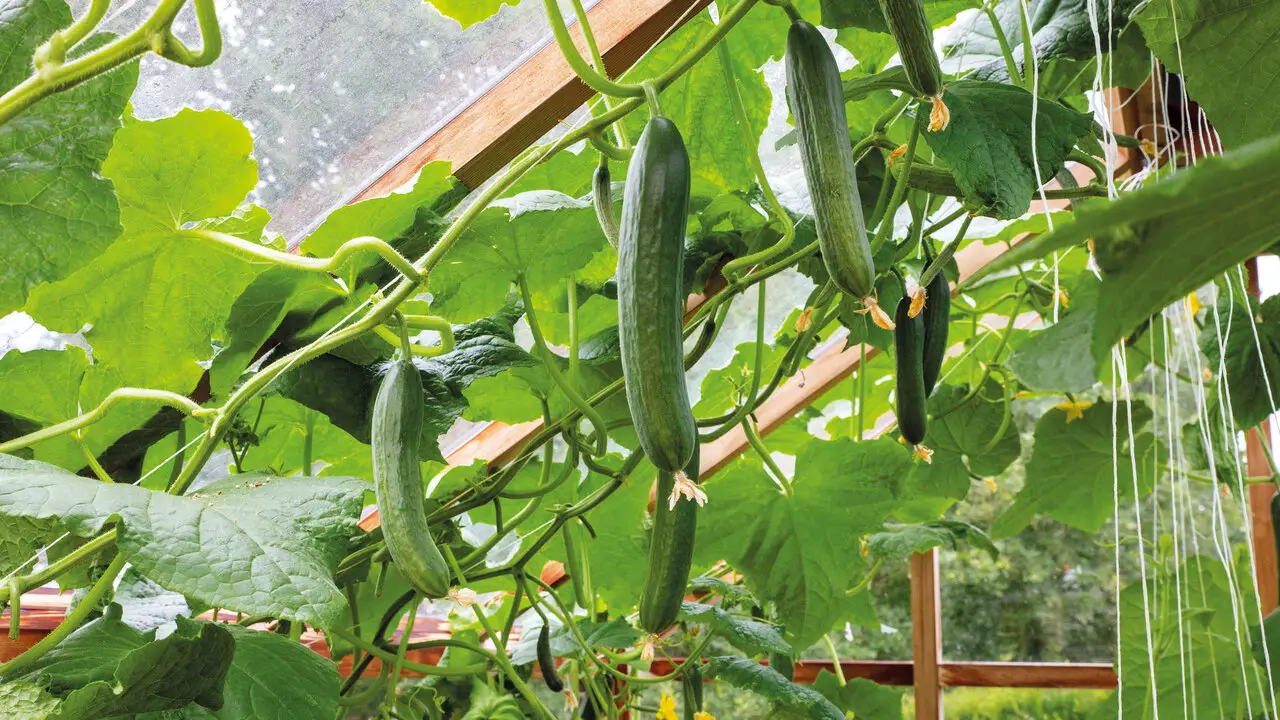
Cucumbers offer multiple benefits when planted alongside kale. They provide valuable shade, shielding the kale plants from the scorching summer sun and heat stress. The cucumber vines act as a living mulch, aiding in moisture retention and reducing evaporation in the soil.
Additionally, the extensive root system of cucumbers helps improve drainage and aeration, benefiting the growth of kale. As cucumbers decompose, they release valuable nutrients into the soil, providing natural fertilization for kale. Furthermore, the vertical growth habit of cucumbers maximizes growing space in the garden when planted alongside kale.
10.Calendula: Attracting Pollinators And Beneficial Insects
Calendula is a fantastic companion plant for kale, as it not only adds beauty to your garden but also attracts pollinators and beneficial insects. The bright orange or yellow flowers of calendula are a magnet for bees, butterflies, and other pollinators, which play a crucial role in the fertilization of kale plants.
Additionally, calendula is known to attract beneficial insects such as ladybugs and lacewings, which help control pests like aphids and caterpillars that can damage kale leaves. By planting calendula alongside your kale, you can create a thriving ecosystem in your garden that promotes healthy growth and robust harvests.
The Benefits Of Companion Planting With Kale
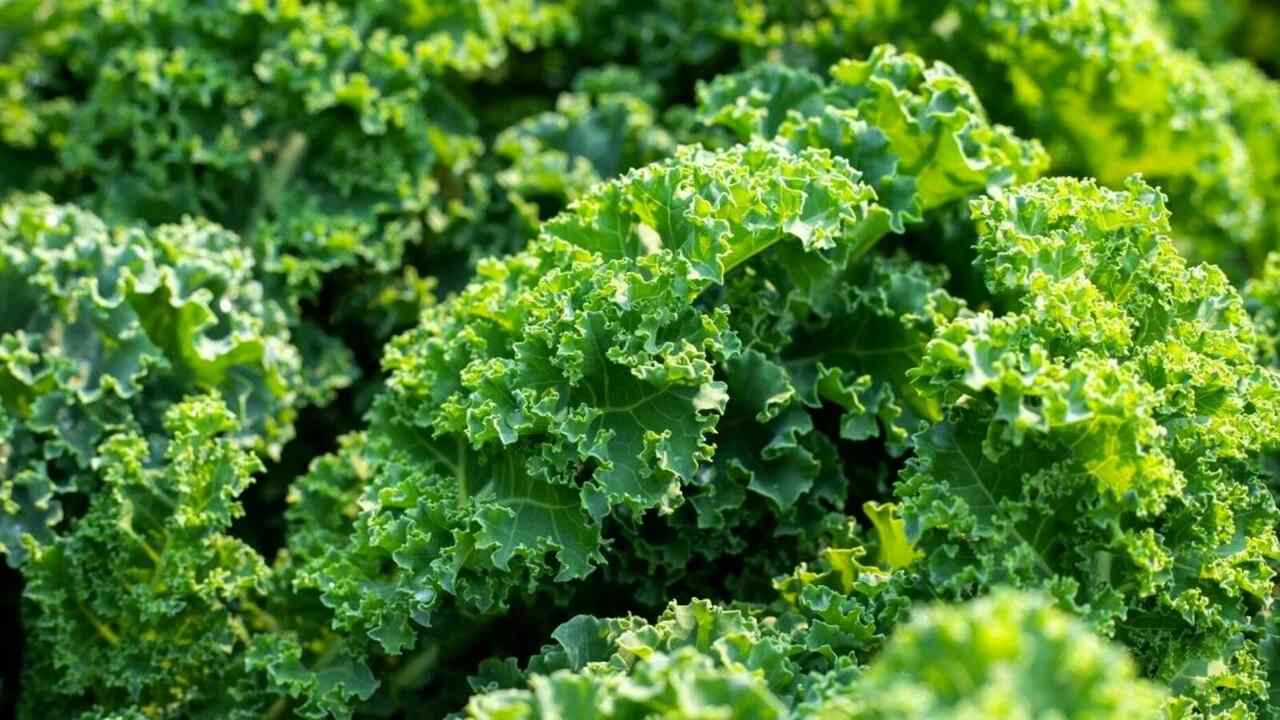
Companion planting with kale offers a range of benefits for your vegetable garden. By strategically planting certain companion plants alongside kale, you can help deter pests like caterpillars and reduce the need for chemical pesticides.
These companion plants can also improve soil quality and nutrient availability, resulting in healthier kale plants and increased yields. They also provide shade and support, protecting kale from harsh weather conditions like frost.
The diverse ecosystem created by companion planting attracts beneficial insects, such as pollinators, that help control pests and promote a more balanced garden ecosystem. Plus, companion planting maximizes growing space and promotes sustainability.
What Makes Certain Plants Unsuitable Companions For Kale?

Certain plants can be unsuitable companions for kale due to various reasons. One common reason is that some plants may attract pests or diseases that can harm kale. For example, planting kale near vegetables like tomatoes or peppers can increase the risk of aphid infestations.
Additionally, certain plants may compete with kale for nutrients and resources, leading to stunted growth or reduced yields. Plants like beans or other legumes have a high nitrogen requirement and may deplete the soil of this essential nutrient, negatively affecting kale’s growth. It is important to research and consider the compatibility of companion plants when planning your kale garden to ensure a robust harvest.
Common Mistakes To Avoid When Companion Planting With Kale
When companion planting with kale, it is important to avoid common mistakes that can hinder the growth and health of your plants. These tips can help maximize kale harvest and create a healthy garden ecosystem. Here are a few tips to keep in mind:
- Avoid planting kale near other brassicas, such as broccoli or cabbage, as they can attract similar pests and diseases.
- Do not plant kale near tomatoes or potatoes, as these plants can compete for nutrients and space.
- Be mindful of the spacing between your kale and its companion plants. Overcrowding can lead to poor air circulation and increase the risk of disease.
- Consider planting herbs like dill or chamomile near your kale, as they can help repel pests.
- Rotate your crops each year to prevent the buildup of pest and disease populations in the soil.
Tips For Successful Companion Planting With Kale
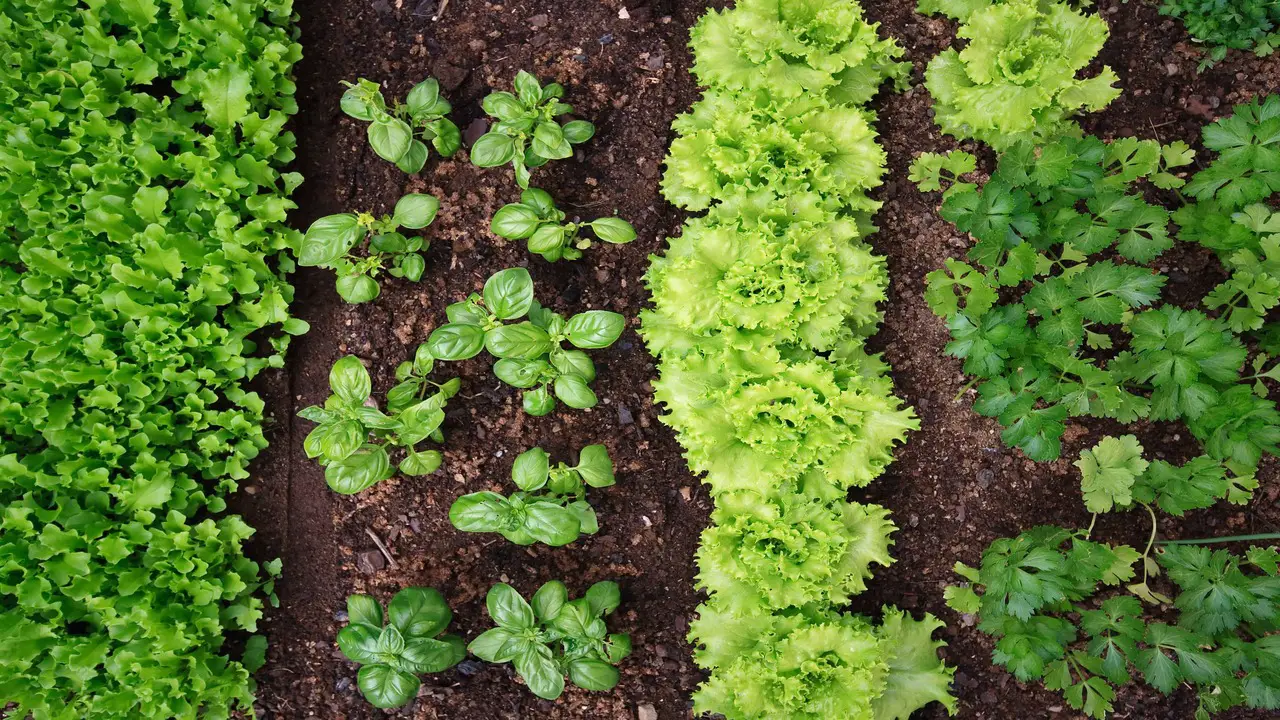
Regarding growing kale, companion planting can greatly maximize your harvest and create a more balanced ecosystem in your garden. Remember that successful companion planting also involves considering each plant’s growth habits and spacing requirements. By strategically choosing your companions for kale, you can create a thriving garden that yields a robust harvest.
Here are some tips for successful companion planting with kale:
- Plant Kale Near Other Brassicas: Kale is a member of the brassica family, so planting it near other brassicas like cabbage or broccoli can help deter pests attracted to these plants.
- Pair Kale With Herbs: Herbs like dill, mint, and thyme can help repel pests that commonly affect kale, such as aphids and cabbage worms. Plus, they add a flavorful touch to your garden.
- Avoid Planting Kale Near Tomatoes Or Strawberries: Tomatoes and strawberries are susceptible to pests and diseases as kale, so it’s best to keep them separate to prevent the spread of any potential issues.
- Consider Intercropping With Legumes: Legumes like beans and peas can help fix nitrogen in the soil, which is beneficial for leafy greens like kale which require nutrient-rich soil.
Tips For Maintaining A Healthy And Thriving Garden With Kale Companion Plants
Maintaining a healthy and thriving garden is essential for a robust kale harvest. One way to achieve this is by planting companion plants that can benefit your kale’s growth and overall health. By carefully selecting companion plants for your kale, you can create a symbiotic environment in your garden that promotes healthy growth and a bountiful harvest. Here are some tips for choosing the best kale companion plants:
- Plant herbs like dill, chamomile, or mint near your kale. These herbs can attract beneficial insects like ladybugs and lacewings, which can help control pests that may attack your kale.
- Consider planting alliums such as onions or garlic. These plants can repel pests like aphids or cabbage worms, which are common problems for kale.
- Legumes like beans or peas can be good companions for kale because they add nitrogen back into the soil, promoting healthy growth.
- Avoid planting kale near other brassicas (cabbage, broccoli, etc.) as they are susceptible to similar pests and diseases.
Conclusion
Companion planting is a tried and tested gardening technique that can greatly benefit your kale harvest. By strategically pairing kale with compatible plants, you can enhance its growth, deter pests, and improve soil quality.
Some excellent companion plants for kale include marigolds, beans, aromatic herbs, sweet alyssum, and more. These plants provide a range of benefits such as pest protection, nitrogen addition to the soil, enhancing flavor and aroma, attracting beneficial insects, suppressing weeds, and improving soil quality. However, it’s important to avoid certain plant combinations hindering kale growth.
To ensure successful companion planting with kale, plan your garden layout, monitor plant health, and provide proper care and maintenance. You can create a thriving and bountiful kale garden by implementing these tips. So it is essential to know best kale companion plants for A robust harvest.
Frequently Asked Questions
1.What’s A Good Companion Plant For Kale?
Ans: Regarding companion plants for kale, there are several options to consider. Some great choices include beans, beets, carrots, celery, and herbs like thyme and chamomile. These plants can help deter pests, attract beneficial insects, and improve soil quality in your garden. Just remember to avoid planting kale with other members of the Brassica family.
2.Do Kale And Carrots Grow Well Together?
Ans: Kale and carrots make great companions in the garden. The carrots help to loosen the soil, allowing the kale roots to grow deeper. Additionally, kale provides shade for carrots, which prefer cooler soil temperatures. Planting them together can also deter pests and improve soil health.
3.Can I Plant Beets And Kale Together?
Ans: You can plant beets and kale together as they are compatible companion plants. Beets help repel pests that attack kale, while kale provides shade for the beets, which prefer cooler temperatures. Planting beets and kale together can create a mutually beneficial gardening experience.
4.Why Should You Use Companion Plants For Kale?
Ans: Companion planting with kale offers numerous benefits. It can enhance growth and yield, repel pests, attract beneficial insects, improve soil quality and nutrient uptake, and create a diverse and sustainable garden ecosystem. Incorporating companion plants will help you achieve a robust harvest of kale.
5.Are There Any Plants That Should Not Be Planted Near Kale As Companions?
Ans: Certain plants are not suitable companions for kale. Avoid planting Brassica family members, like cabbage, broccoli, and cauliflower, near kale. Also, steer clear of plants that attract aphids (such as beans or peas) and nightshade vegetables (like tomatoes, peppers, and eggplants). Additionally, kale should not be planted near water-demanding plants such as melons or cucumbers.


